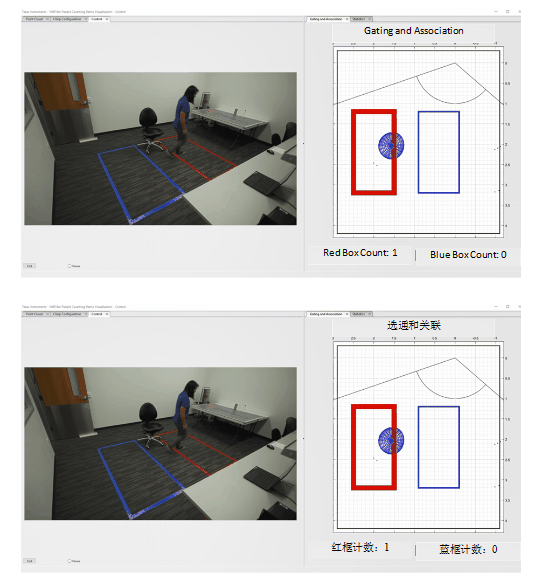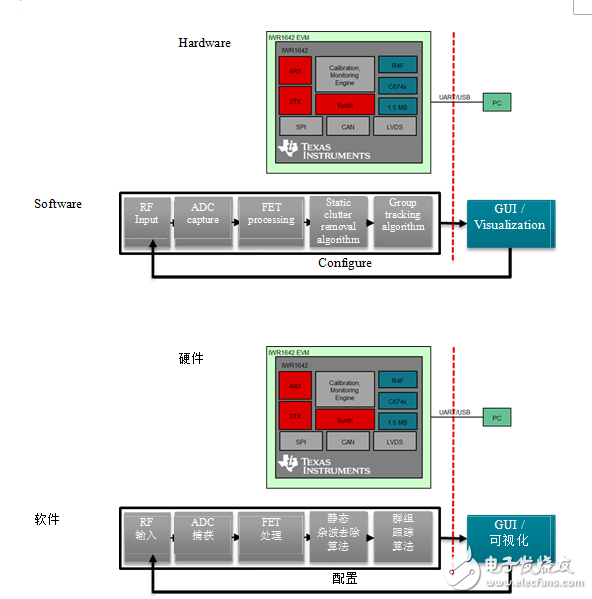Author: Texas Instruments Keegan Garcia
If the building can be truly intelligent, how will it bring about earth-shaking changes in our lives? Imagine that in a commercial building, you can know people's location, whereabouts, and whether they are safe, etc., the building system may be completely changed. The camera will only start the recording function when it is needed; the lighting and heating, ventilation and air conditioning (HVAC) system can work more efficiently according to the actual use; if there are too many people in the elevator, the elevator can skip the pause on a specific floor. Imagine that people can open the door automatically when they want to pass through the automatic door as in "Star Trek".
Just as smart autonomous technologies (including self-driving cars, drones, and robots) will completely change the way people and objects move, future buildings will use smart sensors to automatically adjust the system, thereby improving efficiency and comfort, and reducing waste. Monitoring people ’s positions and tracking their movements indoors and outdoors is a key sensing function, which can increase the degree of intelligence of the system and create future intelligent, efficient, and automated buildings.
Sensing technologies in the field of building automation today include passive infrared (PIR), cameras, and active infrared (lidar, 3D time of flight), etc. These technologies face challenges in terms of accuracy, privacy, environmental robustness, and system complexity So that it cannot effectively meet the requirements of true intelligence.
TI's millimeter wave (mmWave) technology creates radar-based sensors that can overcome sensing difficulties in building automation. TI's millimeter wave technology can provide a point cloud of object position and velocity information within the sensing range. Because the technology uses high radio frequencies, the sensing function is still robust to challenging outdoor conditions such as strong light, darkness, fog, smoke, and precipitation. The technology can also be sensed through plastics and dry walls, so it can be hidden in some equipment or achieve a cleaner industrial design.
TI's millimeter wave sensors can also meet the requirements of indoor people counting applications. Figure 1 shows an example of the output of a millimeter wave sensor that ignores tables and chairs and tracks the positions of multiple people at the same time.

Figure 1: An example of an indoor position output generated by a millimeter wave sensor that simultaneously tracks the position of multiple people relative to the two frames shown on the ground
With integrated hardware processing and the DSP core onboard the TI IWR1642 millimeter wave sensor, complete edge processing can be achieved without the use of complex system topologies or costly external processors.
In the demographic sample (see the block diagram in Figure 2), IWR1642 manages all the software used for tracking and statistics. No external processor is required, and only one PC in the sample is used for visualization and configuration.

Figure 2: The people counting sample using IWR1642 contains all the processing and calculations required for personnel tracking and static clutter removal on IWR1642, reducing the complexity of the system without the need for an external processor
The personnel tracking and statistical reference design using millimeter wave radar sensors shows how the sample works and how to replicate it using the IWR1642 evaluation module (EVM). TI provides source code in the People Statistics Lab on the Millimeter Wave Software Development Kit (SDK) and TI Explorer, which includes all basic software building blocks, libraries, and algorithms. The sample even contains multiple examples that support use cases up to 6 meters and 14 meters.
If these examples do not fully meet your use case requirements, you can use the built-in configuration tool shown in Figure 3 or follow the tuning guide to adjust the performance.

Figure 3: In the demographic sample, you can use the PC visualization tool to configure the area and calculate the detection area; this tool is provided as a reference in the TI Explorer based on MATLAB source code.
In the future, we will use the C674x digital signal processor (DSP) on TI IWR1642 to provide other algorithms such as filtering and classification for building automation applications. Imagine if the motion detection system can ignore the contours of objects, such as trees moving in the wind or leaves falling on the ground, or classifying animals and people passing by. Enable edge detection to determine whether objects should be tracked, this feature will reduce false detections in building automation systems. Millimeter wave technology provides a wealth of information on range, speed, angle, size, and reflectivity, and can be used with the onboard C674x DSP to implement these functions in a single-chip solution.
FM AM Antenna,FM AM Radio Antenna,FM AM Antenna for CAR,Fm AM Antenna Marine,FM AM Antenna for home Stereo
Yetnorson Antenna Co., Ltd. , https://www.yetnorson.com